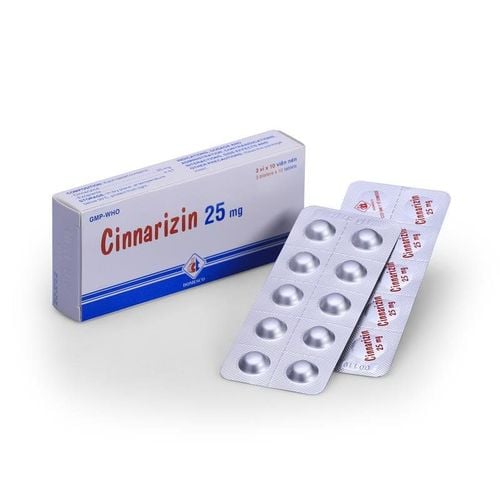This is an automatically translated article.
Quanoopyl is a drug that enhances brain activity by increasing the ability to use energy in an oxygen-deficient environment and through other effects. Please refer to the detailed information about ingredients, uses and usage through the article below.
1. What are the uses of Quanoopyl?
Quanoopyl 400 has the main ingredient Piracetam 400mg and Quanoopyl 800 has Piracetam 800mg ingredients, with the dosage form being film-coated tablets.
Piracetam is a cyclic GABA derivative with euphoric effects, however, the mechanism of action is currently unknown.
On some studies, it was found that Piracetam has effects including:
Acts on chemical mediators such as Acetylcholine, Noradrenalin, Dopamine, ... to help nerve cells work more efficiently. and help improve memory, increase learning ability; Piracetam has the effect of increasing the brain's resistance to lack of oxygen to the brain and thereby helping to prevent metabolic disorders of brain cells when ischemic. The good performance in the hypoxic environment is because the drug increases the use of energy from Glucose independent of the oxygen source, promotes the Pentose pathway and can produce energy for cellular activities; Piracetam also helps to increase the ability to recover from an injury caused by lack of oxygen; Stimulates the release of Dopamine hormone, which helps to increase memory formation; In addition, the drug has an antiplatelet effect, an anti-muscle tremor, and reduces erythrocyte rigidity in some cases to help red blood cells pass through the capillaries more easily.
2. Indications and contraindications of Quanoopyl
Indications:
Quanoopyl is indicated for use in the following cases:
Patients with dizziness, headache and reduced or lost ability to balance. The elderly suffer from memory impairment, reduced concentration, frequent inattention, behavioral disturbances, inability to pay attention to themselves,... Impaired reading ability in children with developmental delays. Stroke due to acute ischemic etiology. Used for patients with alcohol addiction. Sickle cell anemia. Aids in the treatment of myoclonic tremors of cortical origin. After brain injury there is cognitive decline. Contraindications of Quanoopyl
Quanoopyl should not be used for the following subjects:
Patients with a history of hypersensitivity to Piracetam or to any of its ingredients. Severe renal failure: When there is creatinine clearance < 20ml/min; Liver failure. Huntington's disease. Cerebral stroke caused by cerebral hemorrhage.
3. Usage and dosage of Quanoopyl
How to use: Quanoopyl is used orally. Patients can take the drug at any time without affecting food.
Dosage:
The usual dose in adults is an initial dose of 800 mg/times three times daily and in improved cases 400 mg/times three times daily or a weight-based dose range of 30-160 mg/day. kg/day, divided equally 2 times or if high dose divided into 3-4 times/day. In some specific cases, there may be other dosages, please refer to the dosage below:
Long-term treatment in psycho-organic syndromes in the elderly: Use 1.2 - 2.4 g/ day. Doses can be used as high as 4.8 g/day for the first few weeks. Treatment of alcoholism: Up to 12g/day for the first period of alcohol withdrawal, usually by injection. For maintenance treatment, patients should take 2.4 g/day. Cognitive impairment after brain injury: Initial dose may be as high as 9-12 g/day, maintenance dose 2.4 g/day, divided into 3 to 4 times and taken for at least 3 weeks. Sickle cell anemia: Oral 160 mg/kg/day, divided equally into 4 times. Treatment of myoclonus: Use up to 7.2 g/day, divided into 2-3 times. Depending on the patient's response, every 3-4 days, increase by 4.8 g/day until the maximum dose is 20 g/day. Renal impairment: Dosage adjustment is required.
4. Undesirable effects of the drug Quanoopyl
Quanoopyl medicine when used can also cause side effects including:
Common: Restlessness, headache, agitation, mild irritability, drowsiness or insomnia, nausea, constipation or diarrhea diarrhea, fatigue, abdominal distension, or other gastrointestinal disturbances Uncommon or rare: Dizziness , tremors; causes increased libido; If during the course of taking Quanoopyl you experience any of the above symptoms or any other abnormality not mentioned above, you should stop taking the drug and inform your doctor or ask a relative to take you to a medical center. nearest.
5. Notes when using Quanoopyl
Some things you need to keep in mind when taking Quanoopyl include:
Quanoopyl is used under a doctor's prescription, you must not take this medicine without consulting and prescribed by a doctor. Quanoopyl should be used with caution in the elderly and with mild and moderate renal impairment. Because the drug is completely eliminated by the kidney. In addition, it should be used with caution in people with stomach ulcers, myasthenia gravis, epilepsy. Do not suddenly stop taking the drug, especially when treating myoclonus, because it can cause a seizure. For pregnant women: Piracetam has been studied to be able to cross the placental barrier. This medicine should not be used during pregnancy unless absolutely necessary. For nursing mothers: Limit use, if used should talk to a doctor before use. People who drive and use machines: Quanoopyl is unlikely to have any effects on the ability to drive and use machines. Therefore, the drug can be used for this object. Drug Interactions: Drug interactions have been found including Thyroid hormone when taken together causing confusion, irritability, sleep disturbances; Warfarin may increase prothrombin time due to antiplatelet agents. Other medications may also be affected, so tell your doctor about any medications you're taking. Storage: Quanoopyl should be stored at room temperature, below 30 degrees Celsius. Keep the medicine in a dry place, away from direct light. Keep this or any other medicine out of the reach of children and pets. In summary, Quanoopyl is used in many cases and can also be used in combination with other drugs to increase the effectiveness of treatment. The above is information about the uses, dosage and notes when taking the drug, if you have any questions, you should consult your doctor or pharmacist.













